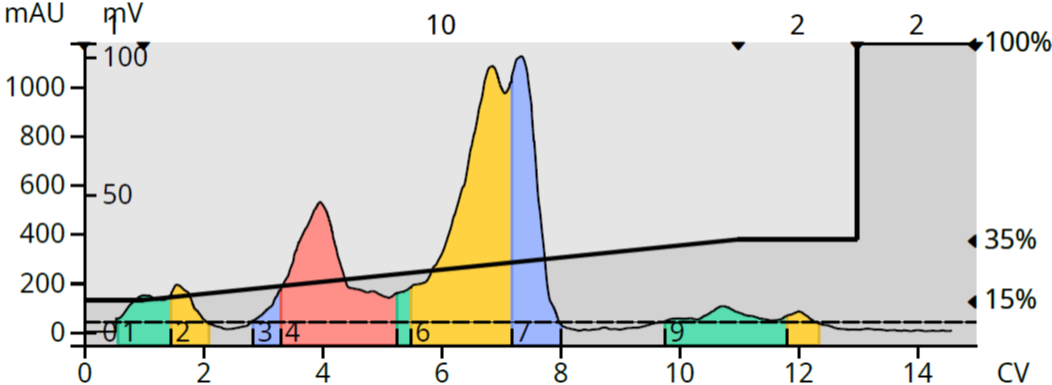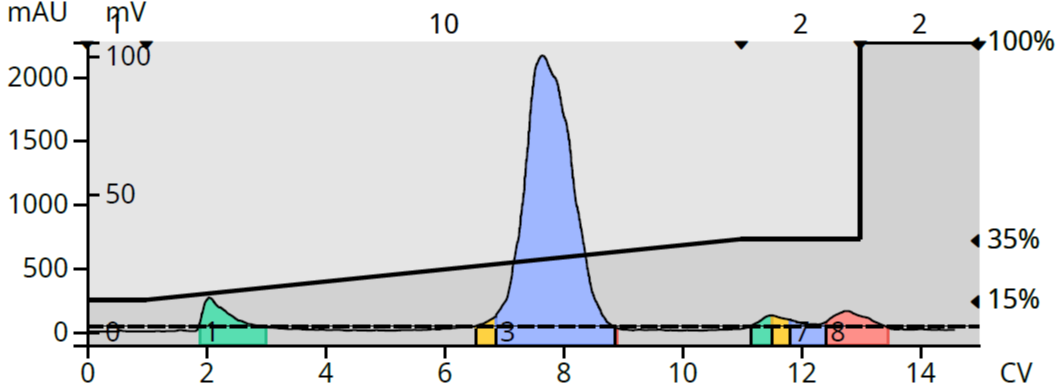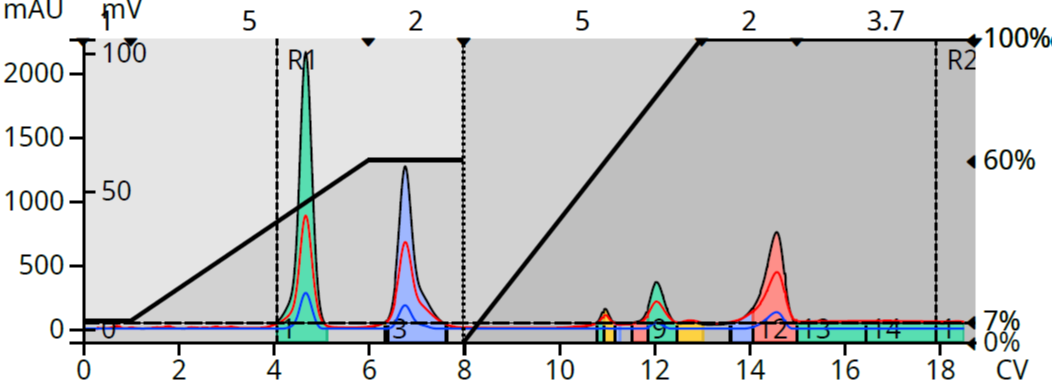Jan 23, 2024 3:00:00 PM
When should more than two solvents be used in a flash chromatography method?
By Bob Bickler

If you use automated flash chromatography you may have a system than can have four solvents attached to it. In fact, most flash chromatography systems are designed to have as many as four solvents available even though only binary gradient purification is possible. The primary reason for having the choice of four solvents allows quick creation of a variety of normal phase and even reversed phase gradients.
There are times, however, when it is beneficial to add a third solvent or even a fourth solvent into your purification method. These include...
- 1. One or more compounds in your crude are charged or ionized in solution. Chromatography of these compounds results in fronting, split, and/or broad peaks. This situation can reduce separation efficiency, loading capacity, product purity, and even yield.
- 2. Your mixture contains both polar and non-polar molecules which are not separable using two solvents and a single column. These mixtures require multiple purifications to isolate one or more of the compounds in the mixture.
If you have not encountered one of these situations, chances are you will at some point in your career.
In the case of ionic or ionizable compounds, most chemists will premix an acid, base, or buffer into pure solvents and run a binary gradient. While this works, it takes time to prepare each solvent. This is not that much of an issue except that you end up with two extra containers of solvent that either need to be date-labeled and stored or disposed when the purification is completed. If you have a flash system capable of pumping three solvents simultaneously, then you can prepare a “stock” modifier solution and use it rather than prepare individual bottles of modified solvents.
To see how to utilize a third solvent, let’s look at the purification of a synthetic imide by reversed phase, Figure 1.
 Figure 1. Reaction of succinic anhydride with α-methylbenzylamine.
Figure 1. Reaction of succinic anhydride with α-methylbenzylamine.
The reaction product ionized in an unbuffered solvent system leading to a split and fronting peak which is not fully resolved from a more polar byproduct, Figure 2. A split and/or fronting peak requires that each fraction be assessed for purity, recombined, and evaporated. These types of peaks tend to be broader and elute over more volume requiring more evaporation time and potential yield losses.
 Figure 2. Reversed phase flash chromatography of the imide reaction mixture using pH neutral solvents generated a product peak that is split and is fronting.
Figure 2. Reversed phase flash chromatography of the imide reaction mixture using pH neutral solvents generated a product peak that is split and is fronting.
Purification with pH neutral solvents yielded a split and fronting peak not fully resolved from an earlier-eluting byproduct.
The addition of a pH modifier can alter compound ionization forcing it to be either fully ionized or fully neutral. The Biotage® Selekt system has the ability to have one of the four selected solvents as a modifier. For this reaction mixture, I chose 2% acetic acid in water as the modifier. I then designed the gradient to use 10% of the modifier to create a 0.2% actual acetic acid concentration in the water/acetonitrile gradient phase, Figure 3.
 Figure 3. pH modified flash chromatography of the imide reaction mixture.
Figure 3. pH modified flash chromatography of the imide reaction mixture.
The acidic modifier supplied a proton source which forced the product into an acetate form resulting in a single, symmetrical peak fully resolved from its byproducts.
In addition to this common issue there is the situation where you will need what I like to call "tandem binary gradient elution" – otherwise known as an A to B to C gradient. The need for this gradient type occurs in the case where the crude mix has compounds with a broad polarity range.
For example, the reaction of α-methylbenzylamine with a 1:1 mixture of nicotinuric acid and isatoic anhydride yielded a mixture of a lipophilic benzamide, a polar nicotinuric acid amide and its ester. For this purification, the best results were achieved with a 10-gram silica column and a tandem gradient starting with a heptane/EtOAc gradient (A to B) to separate and elute the lipophilic compounds and an EtOAc/MeOH gradient (B to C) to separate and elute the polars, Figure 4.
 Figure 4. Reaction mixture purification using an A to B, B to C tandem gradient separated and eluted all reaction products using a single 10-gram Biotage® Sfär HC silica column.
Figure 4. Reaction mixture purification using an A to B, B to C tandem gradient separated and eluted all reaction products using a single 10-gram Biotage® Sfär HC silica column.
This three-solvent tandem gradient method fully separated and eluted all the reaction mixture’s compounds using a single column and method.
In conclusion, the ability to incorporate a third solvent into a method is beneficial when purifying both ionizable and broad polarity mixtures. Try incorporating a third solvent into your purifications.
Products used for this post include…
Biotage® Selekt flash chromatography system
Biotage® Sfär HC 10 g silica and Biotage® Sfär C18 columns
If you have an interest in learning more about flash chromatography, please download our whitepaper – Successful Flash Chromatography
Published: Jan 23, 2024 3:00:00 PM

